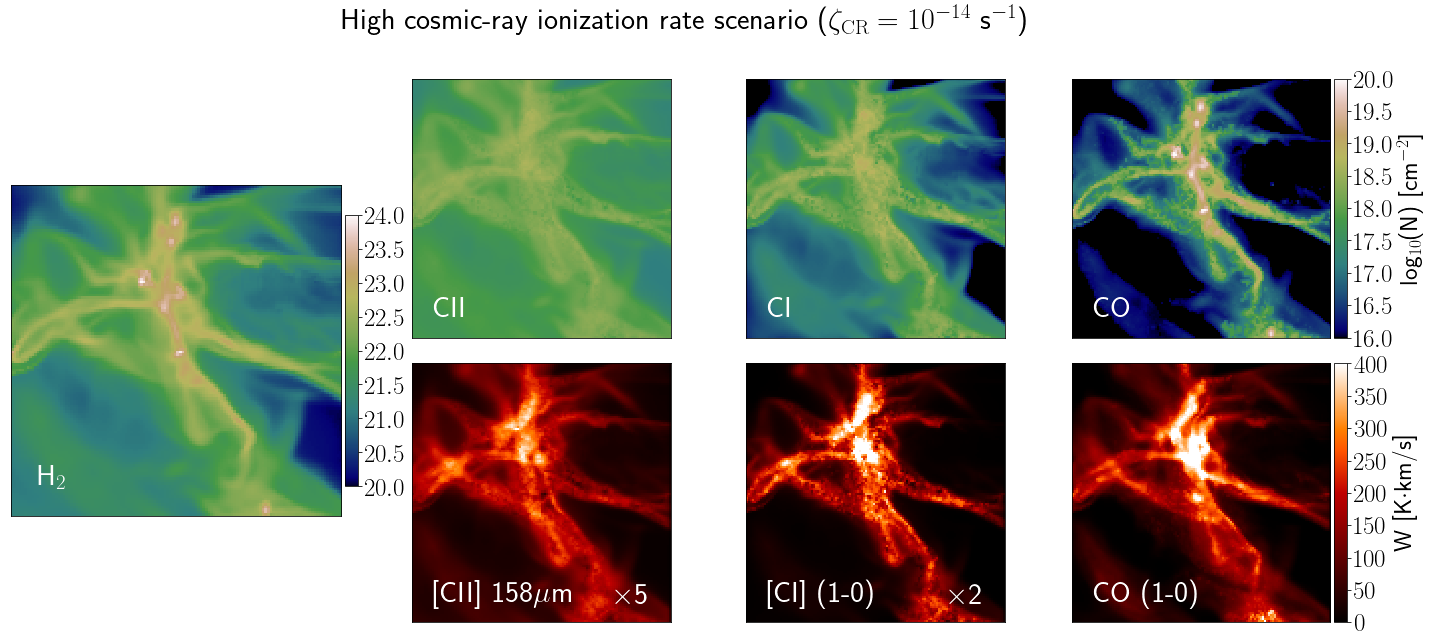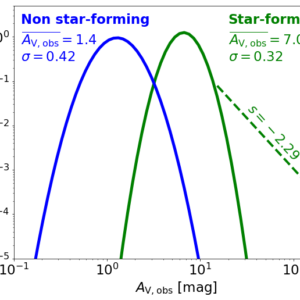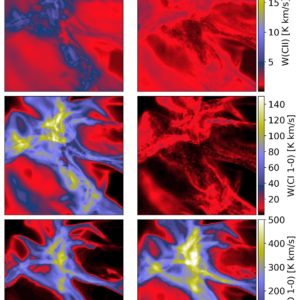
To determine the physical properties and evolution of the interstellar medium (ISM), we need to model its chemical conditions, since these help set its heating & cooling rates and ionization state, which mediates coupling to magnetic field. Calculating the intensity of various emission lines is important not only for estimating cooling rates, but also for predicting the diagnostic information they carry, so we can assess how well ISM conditions can be inferred from a given set of observables. The emission lines of [CII] at 158μm, [OI] at 63μm, [CI](1-0) at 609μm and the CO rotational transitions from J=1-0 are frequently used as diagnostics to reveal the parameters of the ISM in different objects.
The aforementioned lines emitted from the so-called Photodissociation Regions (PDRs), which characterize the interface between ionized and molecular gas phases. For the past 30 years or so, the main focus of PDR studies has been the understanding of the carbon cycle phase (CII/CI/CO) in relation to the atomic-to-molecular (HI-to-H2) transition. In the standard PDR picture, it is far-UV, optical and infrared photons that regulate the thermal state, chemistry, abundances, and emissivities of the various atoms and molecules at low column densities. For higher column densities, it is cosmic rays that penetrate much deeper and control the thermal balance of the ISM leading to different initial conditions for star formation.
Using 3D-PDR, I have modelled the emission of ionic, atomic and molecular lines of various one- and three-dimensional distributions in order to understand much deeper how the brightness temperatures and therefore the velocity integrated emission seen by radiotelescopes, are affected by the different ISM environmental conditions that are present in galaxies. In particular, I have studied how the FUV photons, the metallicity, and the cosmic-ray ionization rate can change the thermal balance, the abundances and the corresponding level populations that result in different emission line strengths. Together with colleagues, we have also seen how more detailed recipes describing the propagation of cosmic-ray particles along a column can affect the carbon cycle emission.
Future studies using ALMA, JWST and the forthcoming CCAT-prime telescope of ISM environments that differ from the local one, such as the Galactic Center, low-metallicity galaxies, and galaxies with high star formation rates, can provide data to help understand the ISM environment in the high-redshift Universe, particularly at z~2-3 marking the `cosmic noon’ of galaxy assembly. The above models are helpful in the interpretation of such data.
Key publications
- Bisbas et al. 2014, MNRAS, 443, 111
- Gaches, B.A.L. 2019, ApJ, 878, 105
- Gaches, B.A.L. 2022, A&A, 658, 151
- Bisbas et al. 2021, MNRAS, 502, 2701

![Read more about the article Origin of the [CII]-deficit](https://thomasbisbas.com/wp-content/uploads/2023/01/deficit-300x300.png)

